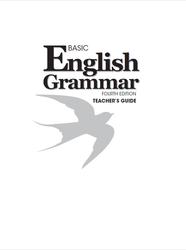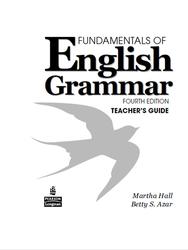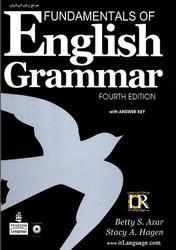Understanding and Using English Grammar is a high-intermediate to advanced level ESL/EFL developmental skills text. In the experience of most classroom teachers, language learners appreciate spending at least some time on grammar with a teacher to help them. For most English language learners, grammar remains the basis of their experience of English. The process of looking at and practicing grammar becomes a springboard for expanding the learners’ abilities in speaking, writing, listening, and reading.
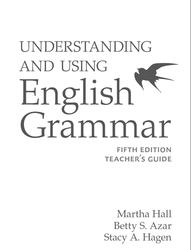
Present and Past; Simple and Progressive.
Simple Past vs. Past Progressive.
At this point, you may wish to explain that a clause is structure that has a subject and a verb, and make the distinction between a main or independent clause and a dependent clause. Students will concentrate on complex sentences in later chapters, but understanding clause structure will help students combine the tenses in this chart. The text assumes that students are quite familiar with sentences containing basic adverb clauses of time using when, while, before, and after. A more detailed discussion of adverb clauses appears later in the text.
Note in (g) and (h): In sentences with when, the progressive usually occurs in the main clause. In sentences with while, the progressive usually occurs in the while-clause.
Contents.
PREFACE.
ACKNOWLEDGMENTS.
INTRODUCTION.
General Aims of Understanding and Using English Grammar.
Suggestions for the Classroom.
Presenting the Grammar Charts.
Additional Suggestions for Using the Charts.
The Here-and-Now Classroom Context.
Demonstration Techniques.
Using the Board.
Oral Exercises with Chart Presentations.
The Role of Terminology.
Balancing Teacher and Student Talk.
Exercise Types.
Warm-Up Exercises.
Preview Exercises.
First Exercise after a Chart.
General Techniques for Fill-in (written) Exercises.
Open-Ended Exercises.
Paragraph Practice.
Error-Analysis Exercises.
Let’s Talk Exercises.
Pairwork Exercises.
Small Group Exercises.
Class Activity Exercises.
Discussion of Meaning Exercises.
Listening Exercises.
Pronunciation Exercises.
Expansions and Games.
Monitoring Errors.
In Written Work.
In Oral Work.
Optional Vocabulary.
Homework.
BlueBlog.
Additional Resources.
Using the Workbook.
Test Bank.
MyEnglishLab.
AzarGrammar.com.
Notes on American vs. British English.
Differences in Grammar.
Differences in Spelling.
Differences in Vocabulary.
Key to Pronunciation Symbols.
The Phonetic Alphabet.
Consonants.
Vowels.
Chapter 1 PRESENT AND PAST; SIMPLE AND PROGRESSIVE.
1-1 Simple Present and Present Progressive.
1-2 Simple Present and Present Progressive: Affirmative, Negative, Question Forms.
1-3 Verbs Not Usually Used in the Progressive (Stative Verbs).
1-4 Simple Past Tense.
1-5 Simple Past vs. Past Progressive.
1-6 Unfulfilled Intentions: Was / Were Going To.
Chapter 2 PERFECT AND PERFECT PROGRESSIVE TENSES.
2-1 Regular and Irregular Verbs.
2-2 Irregular Verb List.
2-3 Present Perfect: Since and For.
2-4 Present Perfect: Unspecified Time and Repeated Events.
2-5 Have and Has in Spoken English.
2-6 Present Perfect vs. Simple Past.
2-7 Present Perfect Progressive.
2-8 Past Perfect.
2-9 Had in Spoken English.
2-10 Past Perfect Progressive.
Chapter 3 FUTURE TIME.
3-1 Simple Future: Forms of Will and Be Going To.
3-2 Will vs. Be Going To.
3-3 Expressing the Future in Time Clauses.
3-4 Using the Present Progressive and the Simple Present to Express Future Time.
3-5 Future Progressive.
3-6 Future Perfect and Future Perfect Progressive.
Chapter 4 REVIEW OF VERB TENSES.
Chapter 5 SUBJECT-VERB AGREEMENT.
5-1 Final -s/-es: Use and Spelling.
5-2 Basic Subject-Verb Agreement.
5-3 Collective Nouns.
5-4 Subject-Verb Agreement: Using Expressions of Quantity.
5-5 Subject-Verb Agreement: Using There + Be.
5-6 Subject-Verb Agreement: Some Irregularities.
Chapter 6 NOUNS.
6-1 Regular and Irregular Plural Nouns.
6-2 Nouns as Adjectives.
6-3 Possessive Nouns.
6-4 More About Expressing Possession.
6-5 Count and Noncount Nouns.
6-8 Expressions of Quantity Used with Count and Noncount Nouns.
6-9 Using A Few and Few; A Little and Little.
6-10 Singular Expressions of Quantity: One, Each, Every.
6-11 Using Of in Expressions of Quantity.
Chapter 7 ARTICLES.
7-1 Articles (A, An, The) with Indefinite and Definite Nouns.
7-2 Articles: Generic Nouns.
7-3 Descriptive Information with Definite and Indefinite Nouns.
7-4 General Guidelines for Article Usage.
7-5 Using The or Ø with Titles and Geographic Names.
Chapter 8 PRONOUNS.
8-1 Pronouns and Possessive Adjectives.
8-2 Agreement with Generic Nouns and Indefinite Pronouns.
8-3 Personal Pronouns: Agreement with Collective Nouns.
8-4 Reflexive Pronouns.
8-5 Using You, One, and They as Impersonal Pronouns.
8-6 Forms of Other.
8-7 Common Expressions with Other.
Chapter 9 MODALS, PART 1.
9-1 Basic Modal Introduction.
9-2 Expressing Necessity: Must, Have To, Have Got To.
9-3 Lack of Necessity (Not Have To) and Prohibition (Must Not).
9-4 Advisability/Suggestions: Should, Ought To, Had Better, Could.
9-5 Expectation: Be Supposed To/Should.
9-6 Ability: Can, Know How To, and Be Able To.
9-7 Possibility: Can, May, might.
9-8 Requests and Responses with Modals.
9-9 Polite Requests with Would You Mind.
9-10 Making Suggestions: Let’s, Why Don’t, Shall I / We.
Chapter 10 MODALS, PART 2.
10-1 Using Would to Express a Repeated Action in the Past.
10-2 Expressing the Past: Necessity, Advisability, Expectation.
10-3 Expressing Past Ability.
10-4 Degrees of Certainty: Present Time.
10-5 Degrees of Certainty: Present Time Negative.
10-6 Degrees of Certainty: Past Time.
10-7 Degrees of Certainty: Future Time.
10-8 Progressive Forms of Modals.
10-9 Combining Modals with Phrasal Modals.
10-10 Expressing Preference: Would Rather.
Chapter 11 THE PASSIVE.
11-1 Active vs. Passive.
11-2 Tense Forms of the Passive.
11-3 Using the Passive.
11-4 The Passive Form of Modals and Phrasal Modals.
11-5 Stative (Non-Progressive) Passive.
11-6 Common Stative (Non-Progressive) Passive Verbs + Prepositions.
11-7 The Passive with Get.
11-8 -ed/-ing Adjectives.
Chapter 12 NOUN CLAUSES.
12-1 Introduction.
12-2 Noun Clauses with Question Words.
12-3 Noun Clauses with Whether or If.
12-4 Question Words Followed by Infinitives.
12-5 Noun Clauses with That.
12-6 Quoted Speech.
12-7 Reported Speech.
12-8 Reported Speech: Modal Verbs in Noun Clauses.
12-9 The Subjunctive in Noun Clauses.
Chapter 13 ADJECTIVE CLAUSES.
13-1 Adjective Clause Pronouns Used as the Subject.
13-2 Adjective Clause Pronouns Used as the Object of a Verb.
13-3 Adjective Clause Pronouns Used as the Object of a Preposition.
13-4 Using Whose.
13-5 Using Where in Adjective Clauses.
13-6 Using When in Adjective Clauses.
13-7 Using Adjective Clauses to Modify Pronouns.
13-8 Punctuating Adjective Clauses.
13-9 Using Expressions of Quantity in Adjective Clauses.
13-10 Using Which to Modify a Whole Sentence.
13-11 Reducing Adjective Clauses to Adjective Phrases.
Chapter 14 GERUNDS AND INFINITIVES, PART 1.
14-1 Gerunds and Infinitives: Introduction.
14-2 Common Verbs Followed by Gerunds.
14-3 Common Verbs Followed by Infinitives.
14-4 Infinitives with Objects.
14-5 Common Verbs Followed by Either Infinitives or Gerunds.
14-6 Using Gerunds as the Objects of Prepositions.
14-7 Go + Gerund.
14-8 Special Expressions Followed by -ing.
14-9 It + Infinitive; Gerunds and Infinitives as Subjects.
14-10 Reference List of Verbs Followed by Infinitives.
14-11 Reference List of Verbs Followed by Gerunds.
14-12 Reference List of Preposition Combinations Followed by Gerunds.
Chapter 15 GERUNDS AND INFINITIVES, PART 2.
15-1 Infinitive of Purpose: In Order To.
15-2 Adjectives Followed by Infinitives.
15-3 Using Infinitives with Too and Enough.
15-4 Passive Infinitives and Gerunds: Present.
15-5 Past Forms of Infinitives and Gerunds.
15-6 Using Gerunds or Passive Infinitives Following Need.
15-7 Using Verbs of Perception.
15-8 Using the Simple Form After Let and Help.
15-9 Using Causative Verbs: Make, Have, Get.
15-10 Using a Possessive to Modify a Gerund.
Chapter 16 COORDINATING CONJUNCTIONS.
16-1 Parallel Structure.
16-2 Parallel Structure: Using Commas.
16-3 Punctuation for Independent Clauses; Connecting Them with And and But.
16-4 Paired Conjunctions: Both. And; Not Only. But Also; Either. Or; Neither. Nor.
Chapter 17 ADVERB CLAUSES.
17-1 Introduction.
17-2 Using Adverb Clauses to Show Time Relationships.
17-3 Using Adverb Clauses to Show Cause and Effect.
17-4 Expressing Contrast (Unexpected Result): Using Even Though.
17-5 Showing Direct Contrast: While.
17-6 Expressing Conditions in Adverb Clauses: If-Clauses.
17-7 Shortened If-Clauses.
17-8 Adverb Clauses of Condition: Using Whether Or Not and Even If.
17-9 Adverb Clauses of Condition: Using In Case.
17-10 Adverb Clauses of Condition: Using Unless.
17-11 Adverb Clauses of Condition: Using Only If.
Chapter 18 REDUCTION OF ADVERB CLAUSES TO MODIFYING ADVERBIAL PHRASES.
18-1 Introduction.
18-2 Changing Time Clauses to Modifying Adverbial Phrases.
18-3 Expressing the Idea of “During the Same Time” in Modifying Adverbial Phrases.
18-4 Expressing Cause and Effect in Modifying Adverbial Phrases.
18-5 Using Upon + -ing in Modifying Adverbial Phrases.
Chapter 19 CONNECTIVES THAT EXPRESS CAUSE AND EFFECT, CONTRAST, AND CONDITION.
19-1 Introduction.
19-2 Using Because Of and Due To.
19-3 Cause and Effect: Using Therefore, Consequently, and So.
19-4 Summary of Patterns and Punctuation.
19-5 Other Ways of Expressing Cause and Effect: Such. That and So. That.
19-6 Expressing Purpose: Using So That.
19-7 Showing Contrast (Unexpected Result).
19-8 Showing Direct Contrast.
19-9 Expressing Conditions: Using Otherwise and Or (Else).
Chapter 20 CONDITIONAL SENTENCES AND WISHES.
20-1 Overview of Basic Verb Forms Used in Conditional Sentences.
20-2 Expressing Real Conditions in the Present or Future.
20-3 Unreal (Contrary to Fact) in the Present or Future.
20-4 Unreal (Contrary to Fact) in the Past.
20-5 Using Progressive Verb Forms in Conditional Sentences.
20-6 Using “Mixed Time” in Conditional Sentences.
20-7 Omitting If.
20-8 Implied Conditions.
20-9 Wishes About the Present and Past.
20-10 Wishes About the Future; Use of Wish + Would.
INDEX.
ANSWER KEY.
Бесплатно скачать электронную книгу в удобном формате, смотреть и читать:
Скачать книгу Understanding and Using English Grammar, Fifth Edition, Teacher’s Guide, Hall M., Azar B.S., Hagen S.A., 2017 - fileskachat.com, быстрое и бесплатное скачивание.
Скачать pdf
Ниже можно купить эту книгу, если она есть в продаже, и похожие книги по лучшей цене со скидкой с доставкой по всей России.Купить книги
Скачать - pdf - Яндекс.Диск.
Дата публикации:
Теги: учебник по английскому языку :: английский язык :: Hall :: Azar :: Hagen
Смотрите также учебники, книги и учебные материалы:
Следующие учебники и книги:
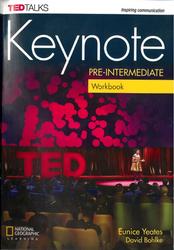 Keynote Pre Intermediate, Workbook, Yeates E., Bohlke D., 2017 — Фрагмент из книги. Without modem technology, Michael Chorost wouldn’t be able to hear a thing. Chorost became deaf in 2001, … Книги по английскому языку
Keynote Pre Intermediate, Workbook, Yeates E., Bohlke D., 2017 — Фрагмент из книги. Without modem technology, Michael Chorost wouldn’t be able to hear a thing. Chorost became deaf in 2001, … Книги по английскому языку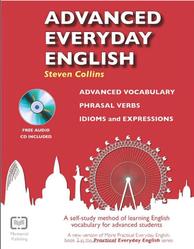 Advanced Everyday English, Collins S., 2011 — You will never find a better series of books to help you improve your English vocabulary. Advanced Everyday English is … Книги по английскому языку
Advanced Everyday English, Collins S., 2011 — You will never find a better series of books to help you improve your English vocabulary. Advanced Everyday English is … Книги по английскому языку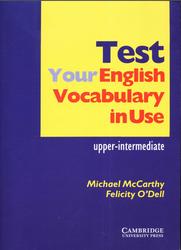 Test Your English Vocabulary In Use, Upper-Intermediate, McCarthy M., O Dell F., 2002 — Did you know that testing your English vocabulary could be enjoyable? You can use this book alone, or in class, … Книги по английскому языку
Test Your English Vocabulary In Use, Upper-Intermediate, McCarthy M., O Dell F., 2002 — Did you know that testing your English vocabulary could be enjoyable? You can use this book alone, or in class, … Книги по английскому языку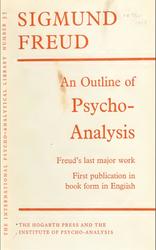 An Outline of Psycho-Analysis, Freud S., 1959 — An Outline of Psycho-Analysis is the last book which Sigmund Freud wrote before his death. A masterpiece of clarity and … Книги по английскому языку
An Outline of Psycho-Analysis, Freud S., 1959 — An Outline of Psycho-Analysis is the last book which Sigmund Freud wrote before his death. A masterpiece of clarity and … Книги по английскому языку
Предыдущие статьи:
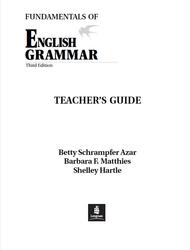 Fundamentals of English Grammar, Teacher’s Guide, Azar B.S., Matthies B.F., Hartle S., 2003 — The principal aims of Fundamentals of English Grammar are to present clear, cogent information about English grammar and usage, to … Книги по английскому языку
Fundamentals of English Grammar, Teacher’s Guide, Azar B.S., Matthies B.F., Hartle S., 2003 — The principal aims of Fundamentals of English Grammar are to present clear, cogent information about English grammar and usage, to … Книги по английскому языку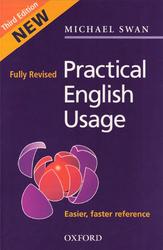 Practical English Usage, Swan M., 2005 — Practical English Usage is a guide to problems of this kind. It deals with over 600 points which regularly cause … Книги по английскому языку
Practical English Usage, Swan M., 2005 — Practical English Usage is a guide to problems of this kind. It deals with over 600 points which regularly cause … Книги по английскому языку Cutting Edge Phrase Builder, Advanced — Фрагмент из книги. Assert yourself to behave in a determined way so that people do not force you to do … Книги по английскому языку
Cutting Edge Phrase Builder, Advanced — Фрагмент из книги. Assert yourself to behave in a determined way so that people do not force you to do … Книги по английскому языку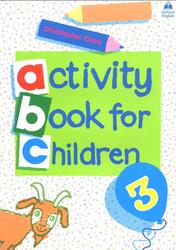 Activity Books for Children 3, Clark C., 1983 — Activity Books for Children are packed with engaging and creative tasks to help your pupils learn English. All the activities … Книги по английскому языку
Activity Books for Children 3, Clark C., 1983 — Activity Books for Children are packed with engaging and creative tasks to help your pupils learn English. All the activities … Книги по английскому языку

